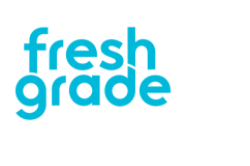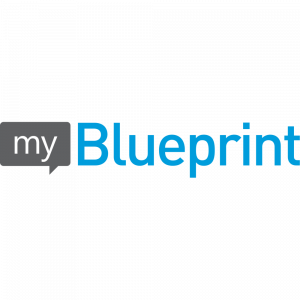Assessment as an opportunity for growth
Assessment helps guide the learner towards understanding their misconceptions and can help them use feedback to set new learning goals. In other words, it allows students to know where they are, where they wish to go and what they need to do to grow.
“Assessment is today’s means of modifying tomorrow’s instruction.” — Carol Ann Tomlinson
With the shift in focus on core competencies as highlighted in the BC’s framework for classroom assessment, it is important to consider how students can demonstrate these skills, showing their progress.
The BC K-12 assessment system highlights several key goals of assessment:
- To identify student learning needs
- To measure competency acquisition
- To measure deeper, complex thinking
- To evaluate students’ progress toward meeting provincial learning standards
- To support a flexible, personalised approach to learning
Two main shifts occurred in the renewed BC curriculum:
- Competency-driven curriculum; the redesigned curriculum focuses on curricular competencies which include the skills, strategies and processes students develop as they learn.
- Focus on ongoing classroom assessment throughout K-12, rather than provincial subject-specific examinations in Grades 10-12.
In an attempt to allow diverse learners to share their progress and in keeping with Universal Design for Learning (UDL), using a ‘range of alternatives for students representation‘ is recommended. This is in keeping with Universal Design for Learning (UDL).
Performance assessment tools allow for showing progress over time, as well as a focus on students’ strengths and potentials. With the transition to online learning, digital portfolios offer a valuable tool to encourage students to document and reflect upon their learning experiences as they engage in self-assessment.
Digital portfolios
Digital portfolios are web-based collections of student work gathered over time. With growing emphasis on digital and media literacy in K-12 education, students can use these tools to build an online presence and document the milestones in their learning journey.
Two platforms widely used in British Columbia for digital portfolios are FreshGrade, myBluePrint and Scholantis
1. FreshGrade

FreshGrade is a Canadian housed/FIPPA compliant platform free for all teachers, students and families. NB: update Feb 2022 – Freshgrade is being retired in the next year.
It allows teachers to:
- plan their own lessons,
- create and schedule assignments,
- make custom groups
- align assignments to standards or objectives
- use a variety of gradebooks; standards-based, score-based, or anecdotal gradebook.
More details on getting started with FreshGrade could be found here.
Digital portfolios in four steps:
According to Starr Sackstein, a New York educator, digital portfolios allow students to be self-reflective, deepen the transfer of knowledge and encourage the connections with past, present and future.
She explains 4 steps to create digital portfolios in her blog post on FreshGrade’s website:
- Collect: students capture all the learning that took place
- Select: students select work based on the purpose of the digital portfolios (as selected by teachers and/or students)
- Reflect: students explain why they made these selections and how they articulate these things, the process for making the work, where they struggled, and how they grow, and/or compare two assignments and how they have grown
- Connect: students looks for connections between unit and unit, skill and skill, as well as between all of their classes.
She also suggests incorporating ‘Exit Portfolio conferences” to allow students a chance to review their growth throughout the year.
For more information on the use of FreshGrade, free online courses are provided here.
2. myBlueprint

MyBlueprint is a Canadian-based K-12 career and life planning platform commonly used in BC schools for learning portfolios.
For Grades 7-12, My blueprint offers href=”https://www.myblueprint.ca/products/educationplanner” target=”_blank” rel=”noopener noreferrer”>Education Planner. Education Planner allows the learner to document learning through multiple portfolios and also allows the documentation of research.
For Grades K-6, My blueprint offers All about Me; a more visual portfolio.
All About Me allows:
- Teachers to create class activities with clear steps, as well as sharing comments and questions to promote self-reflection by students.
- Teachers and parents to interact with the students’ posts.
- Facilitates teacher communication with families/parents through bulletins or private messages.
- Students to create their own portfolios.
Digital portfolios allow students to:
- own their learning,
- curate, organise and show case their work
- reflect on and communicate their learning.
- set goals and become more self-directed learners
Students can showcase the learning process through journals, media and reflections in drawings, text, video/audio recordings and images.
Some examples of artefacts a student might include are provided on myBlueprint’s All About Me website:
- Students can reflect on daily events such as seeing a new bird in the backyard and adding evidence of new learning as they walk.
- Student can read a book and document their learning journey through a) taking a photo of the book b) record reading of the book c)record their reflection via audio recording to allow assessing of comprehension d) add photos related to community helping.
- Students can read articles and write/record reflections on an emerging topic such as “COVID-19 and the importance of social distancing.”
For a little more on assessment, visit this blog post by Yvonne Dawydiak, Learning Design Manager in UBC Teacher Education. The post introduces us to some ways digital technologies might be integrated to support assessment (and to allow students to communicate their learning) through multi-modal creation, all-class response, and student response systems.
Guest Post: Nashwa Khedr, EDCP graduate student, project assistant 2020

